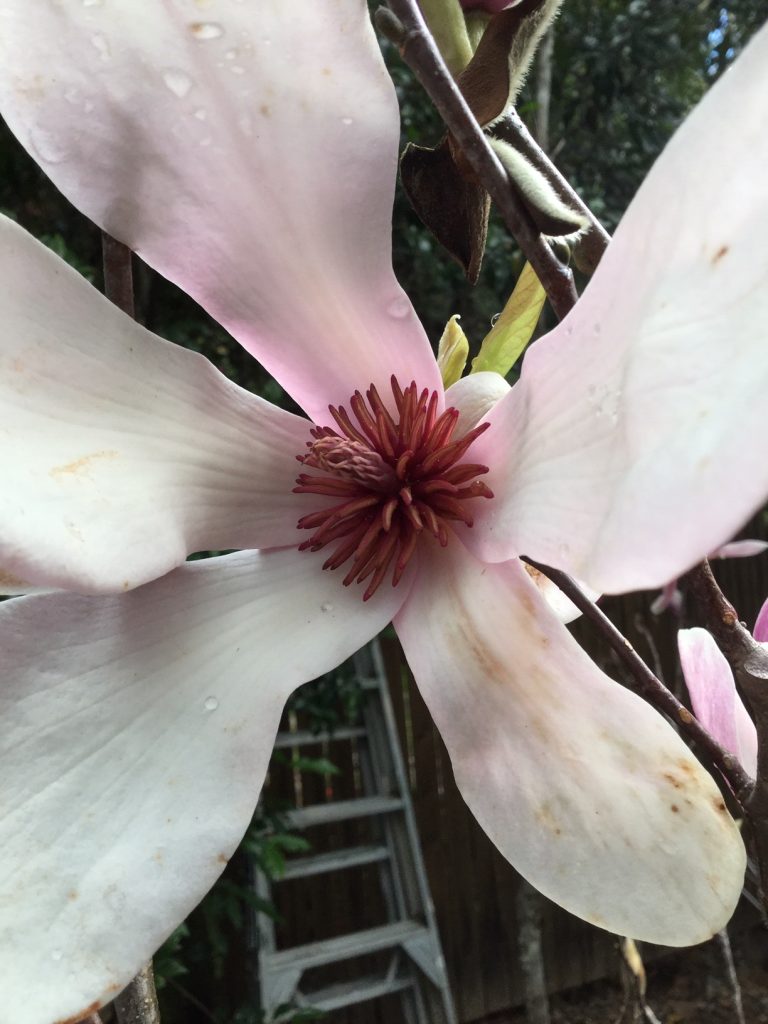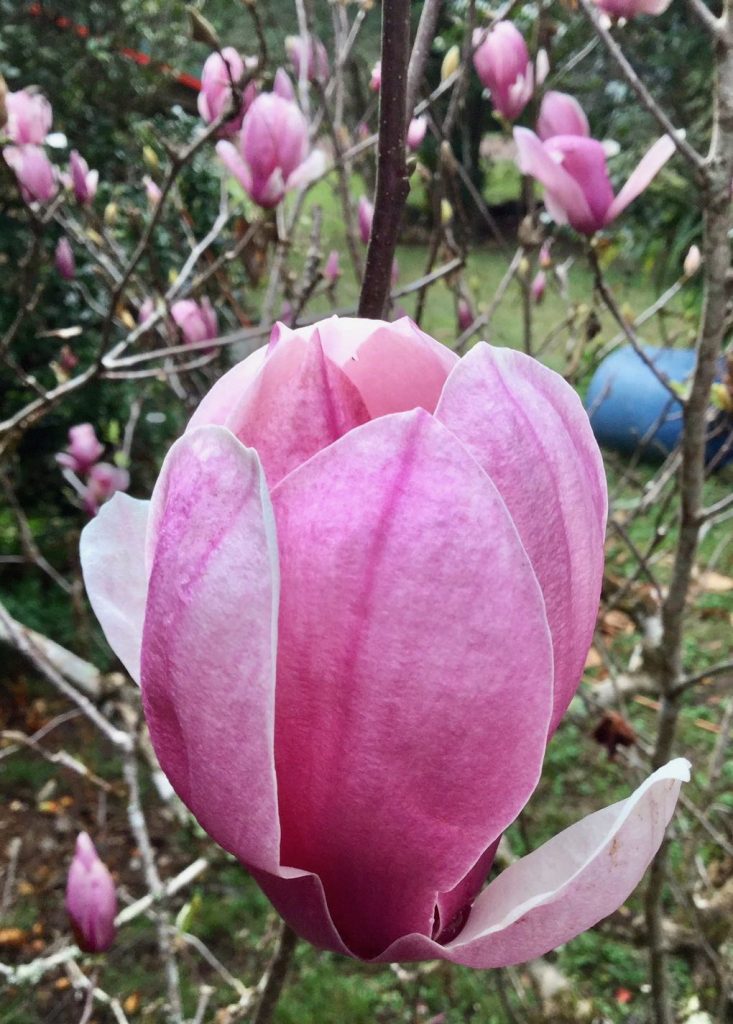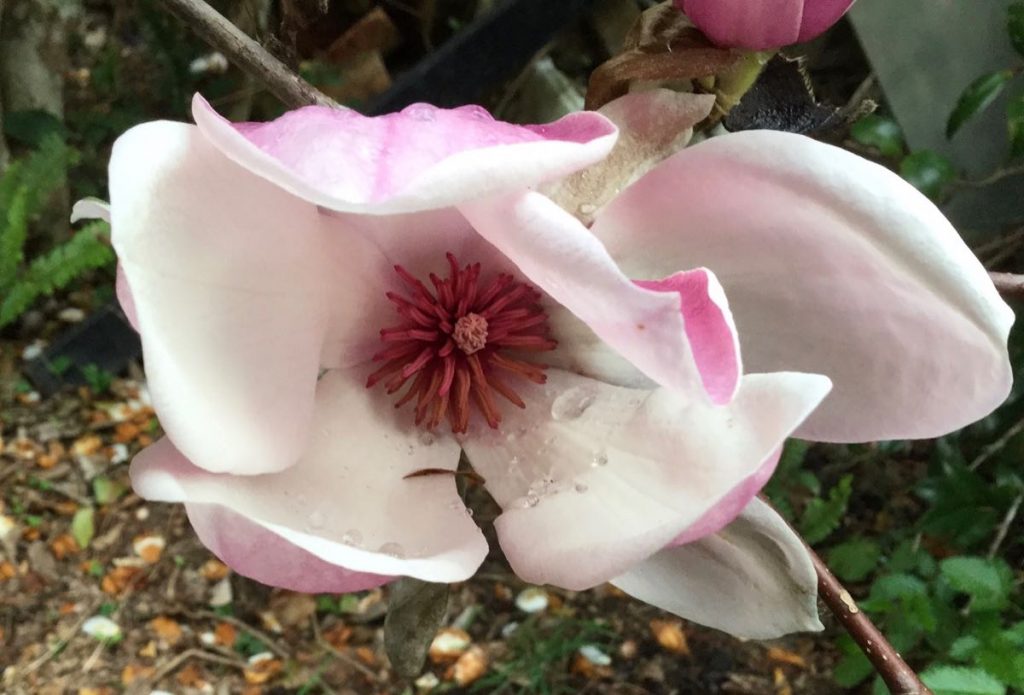When Len Cook’s beautiful Magnolia was featured recently in ‘What’s Blooming in Paluma’, I felt that this plant deserves more than just a brief mention. So, having read a little about the Magnolia family, I would like to share with you, a little of what I have learnt.
The Magnolia is one of about 210 flowering plant species in the sub-family Magnolioidaceae of the family Magnoliaceae. It was named after the French botanist, Pierre Magnol.
The Magnolia is an ancient genus, one of the most primitive plants in evolutionary history. Fossil records suggest that the genus has existed from the Cretaceous Period (145-66 million years ago). The Magnolia was the first flowering plant, appearing around 95 million years ago. Before this were only ferns, horsetails, cycads and conifers. The connection with conifers can be seen in the protruding female organs which develop into a cone-like mass of seeds. The flower bud is enclosed in a bract rather than in sepals. The perianth parts are undifferentiated (similar in size and shape) and called tepals rather than distinct sepals and petals. The cone-like receptacle in the centre is composed of numerous spirally arranged carpels and numerous spirally arranged stamens.

The Magnolia evolved before bees and pollination is by beetles and beetle-type insects. To improve its means of successful pollination the inner tepals of the flower remain tightly closed, allowing visiting beetles to feed safely and become covered in pollen. Magnolias are monoecious, that is, bearing both male and female organs on the same specimen. To counteract the risk of self-pollination, individual plants will not mature their male and female organs at the same time. This enables pollen from one specimen’s male flower to reach the female organ of another.
Before the last Ice Age, distribution was across most of the Northern Hemisphere: mainland Europe, North America and Asia. Since the Ice Age, it has been restricted to southern USA, Central America and South-East Asia, however Magnolias have naturalised in many countries.
Apart from the large Magnolia genus, the family contains the fragrant Michelias and the tulip tree.
Although the flower colour may be only white, pink or purple, the flower shape has taken on a great variety with blooms being described as lily, goblet, cup or star shaped. One species, the rare giant Himalayan Magnolia (M. campbelli), may grow to 15 metres and has huge flowers, 25 centimetres across.

Many beautiful and varied plants have been hybridised. For example, from hybridising M. heptapeta and M.quinquipeta comes a host of M.soulangiana varieties from which in turn other cultivars have been developed.
Magnolias are fairly hardy but should be planted in a sheltered position, out of direct wind and rain. Ideally, they should be with other plants where they will get light, shade and shelter, but not too dense as they need sunlight to encourage flower formation. They are often difficult to transplant, especially when large. Layering is probably the best way of propagating or taking cuttings from a heel of older wood.
What a magnificent and venerable tree this is. And what a survivor!

Text & Photos by Colwyn Campbell

Thanks Colwyn, I learnt a lot about magnolia’s. Photos are great
Thanks for this very informative article on a fascinating and ancient lineage of flowering plants. The pictures are wonderful.